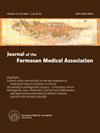Recent trends of low-density lipoprotein cholesterol control and lipid-lowering therapy in patients with atherosclerotic cardiovascular disease in Taiwan: 2015–2020
IF 2.6
3区 医学
Q1 MEDICINE, GENERAL & INTERNAL
引用次数: 0
Abstract
Objective
This study aimd to assess recent trends in the control of low-density lipoprotein cholesterol (LDL-C) and the utilization of lipid-lowering drugs (LLD) among patients with atherosclerotic cardiovascular disease (ASCVD) in Taiwan.
Methods
Patients with ASCVD and without a history of hemorrhagic stroke were identified from the Taiwanese Secondary Prevention for patients with AtheRosCLErotic disease (T-SPARCLE) Registry. ASCVD patients were stratified into four categories: those who ever had acute coronary syndrome (ACS), those who underwent percutaneous coronary intervention or coronary artery bypass grafting (PCI/CABG) without ACS, those who ever had an ischemic stroke (IS) without ACS or PCI/CABG, and other ASCVD cases. We assessed their latest recorded LDL-C levels for the periods 2015–16, 2017–18, and 2019–20. LLD therapy patterns were presented as monotherapy, dual therapy, or combination therapy of three or more drugs, with statin use classified by intensity.
Results
We identified 3831 ASCVD patients in 2015–16, 3531 in 2017–18, and 1231 in 2019–20. LLD utilization rose from 58.4% in 2015–16 to 73.2% in 2019–20. The proportions of patients achieving LDL-C goals in 2015–16, 2017–18, and 2019–20 were 21.5%, 25.8%, and 33.3% in the ACS cohort (goal <70 mg/dL); 20.4%, 26.1%, and 39.0% in the PCI/CABG cohort (goal <70 mg/dL); 54.4%, 58.5%, and 58.9% in the IS cohort (goal <100 mg/dL); and 60.0%, 65.5%, and 67.0% in the other ASCVD cohort (goal <100 mg/dL), respectively. Over half of the patients were prescribed moderate-intensity statins. Statin use, age, history of diabetes mellitus, and hypertension were important factors for attaining LDL-C goal in ACS patients.
Conclusion
Despite improvements in LDL-C management observed over recent years, significant gaps remain in guideline adherence, especially for patients with ACS or PCI/CABG in Taiwan, with over 60% not meeting LDL-C targets. Intensifying efforts to align clinical practice with guidelines are imperative.
2015-2020 年台湾动脉粥样硬化性心血管疾病患者低密度脂蛋白胆固醇控制和降脂治疗的最新趋势。
研究目的本研究旨在评估台湾动脉粥样硬化性心血管疾病(ASCVD)患者低密度脂蛋白胆固醇(LDL-C)控制和降脂药物使用的最新趋势:方法:从台湾动脉粥样硬化性心血管疾病患者二级预防登记处(T-SPARCLE)中筛选出无出血性脑卒中病史的动脉粥样硬化性心血管疾病患者。ASCVD 患者被分为四类:曾患急性冠状动脉综合征(ACS)者、接受经皮冠状动脉介入治疗或冠状动脉旁路移植术(PCI/CABG)但未患 ACS 者、曾患缺血性脑卒中(IS)但未患 ACS 或 PCI/CABG 者以及其他 ASCVD 病例。我们评估了他们在 2015-16 年、2017-18 年和 2019-20 年期间最新记录的 LDL-C 水平。低密度脂蛋白胆固醇治疗模式表现为单药治疗、双药治疗或三种或三种以上药物的联合治疗,他汀类药物的使用按强度分类:我们发现,2015-16年有3831名ASCVD患者,2017-18年有3531名,2019-20年有1231名。LLD使用率从2015-16年的58.4%上升到2019-20年的73.2%。2015-16 年、2017-18 年和 2019-20 年,ACS 队列中达到 LDL-C 目标的患者比例分别为 21.5%、25.8% 和 33.3%(目标结论):尽管近年来低密度脂蛋白胆固醇(LDL-C)管理有所改善,但在指南遵守方面仍存在显著差距,尤其是台湾的 ACS 或 PCI/CABG 患者,超过 60% 的患者未达到低密度脂蛋白胆固醇(LDL-C)目标。加强临床实践与指南的一致性势在必行。
本文章由计算机程序翻译,如有差异,请以英文原文为准。
求助全文
约1分钟内获得全文
求助全文
来源期刊
CiteScore
6.50
自引率
6.20%
发文量
381
审稿时长
57 days
期刊介绍:
Journal of the Formosan Medical Association (JFMA), published continuously since 1902, is an open access international general medical journal of the Formosan Medical Association based in Taipei, Taiwan. It is indexed in Current Contents/ Clinical Medicine, Medline, ciSearch, CAB Abstracts, Embase, SIIC Data Bases, Research Alert, BIOSIS, Biological Abstracts, Scopus and ScienceDirect.
As a general medical journal, research related to clinical practice and research in all fields of medicine and related disciplines are considered for publication. Article types considered include perspectives, reviews, original papers, case reports, brief communications, correspondence and letters to the editor.

 求助内容:
求助内容: 应助结果提醒方式:
应助结果提醒方式:


